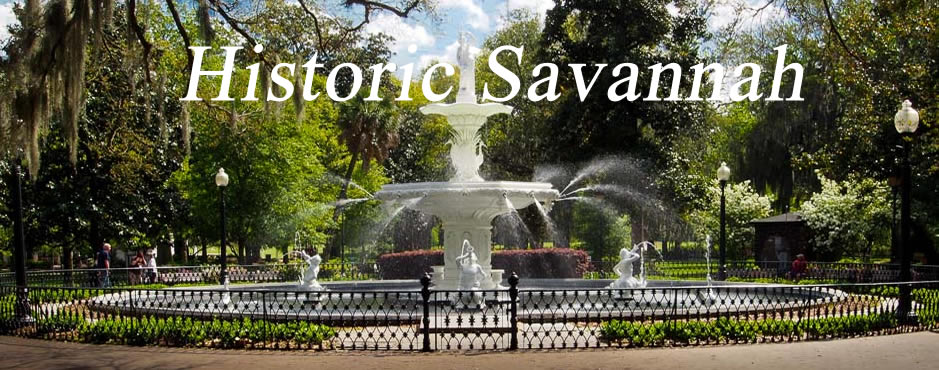Orleans Square to Crawford Square (3 Squares)
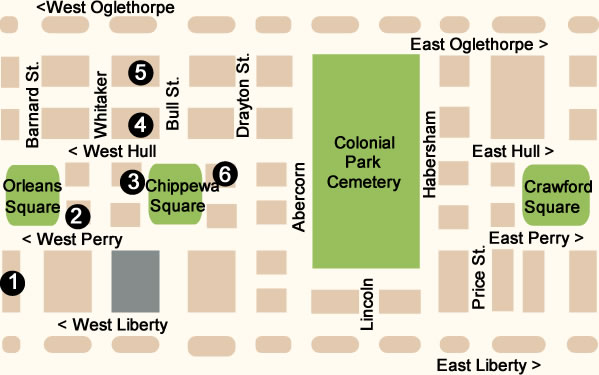
W. Hull and E. Hull Street (3 Squares)
Points of Interest:
Orleans Square
 Savannah Civic Center
Savannah Civic Center
- German Societies Fountain - Center of Orleans Square
Chippewa Square *****
 Independent Presbyterian Church
Independent Presbyterian Church
Tours on Friday 9:00a - 1:00p
- Statue of James Oglethorpe - Center of Chippewa Square
Colonial Park Cemetery
- Served as Savannah’s primary public cemetery from 1750 to 1853.
Crawford Square
- White Gazebo - center of Crawford Square
- Old County Jail and Police Department built in 1887 - (Near Crawford Square)
Orleans Square
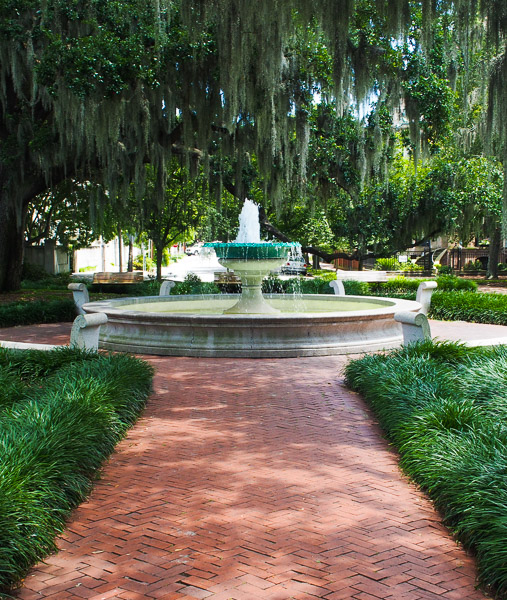 German Societies Fountain
German Societies Fountain 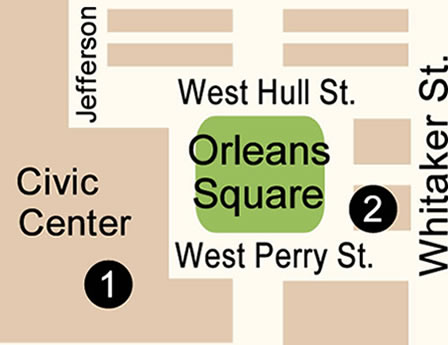
Points of Interest
 Savannah Civic Center
Savannah Civic Center
- German Societies Fountain - Center of Orleans Square
Orleans Square was laid out in 1815 and commemorates General Andrew Jackson's victory in the Battle of New Orleans. Orleans Square is located on Barnard, between Hull and Perry Streets, and is adjacent to the Savannah Civic Center.
The German Memorial Fountain stands in the center of the square. It honors the German immigrants who came to Savannah. There are several buildings designed and built by prominent architects and builders between 1800 and 1875 that are located around Orleans Square.
Chippewa Square
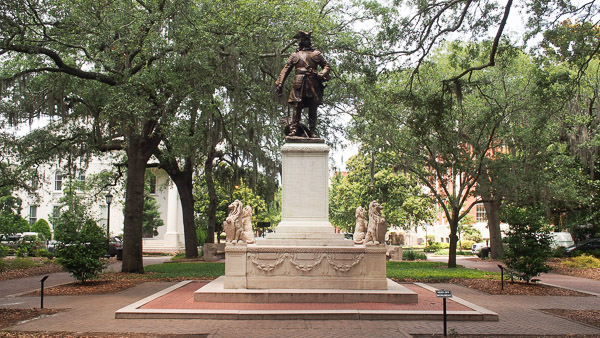
Monument to James Oglethorpe 
Points of Interest
 Independent Presbyterian Church
Independent Presbyterian Church
- Statue of James Oglethorpe - Center of Chippewa Square
Chippewa Square was laid out in 1815, after the Revolution, and was named in honor of American soldiers killed in the Battle of Chippewa during the War of 1812.
Chippewa Square is one of Savannah’s most popular Squares. In the middle of the Square is the monument to the founder of Savannah, James Edward Oglethorpe which was placed in the square in 1910.
Chippewa Square is intersected by Hull, McDonough and Perry Streets, with Liberty Street running the southern boundary of the ward.
Buildings of interest surrounding the square are the First Baptist Church, built between 1831 and 1833 and the Philbrick-Eastman House built in 1844. The First Baptist Church is the oldest house of worship in Savannah. The Independent Presbyterian Church, built in 1891, is located on the northwest corner of the square. Also, located on Chippewa Square is the Savannah Theatre. This theatre, built in 1818, is the oldest continually running theatre in the United States.
Colonial Park Cemetery
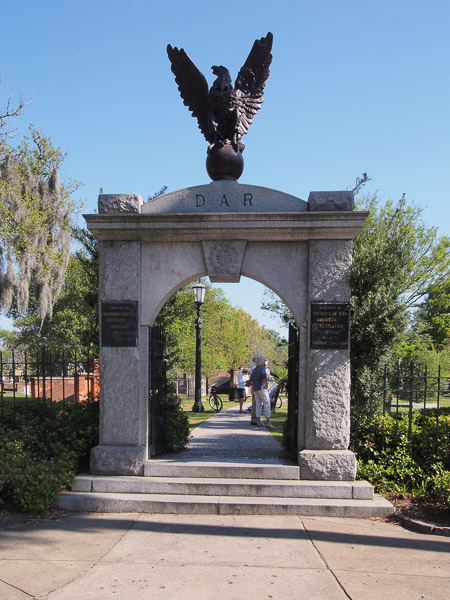
Colonial Cemetery
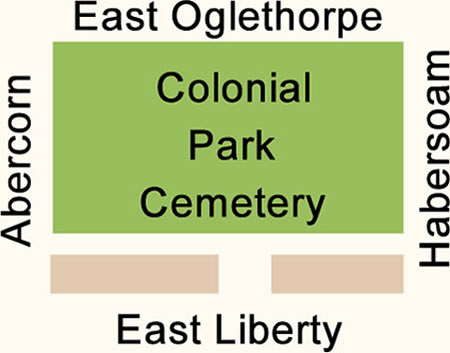
Opened to the public
November - March 8:00a - 5:00p
March - November 8:00a - 8:00p
201 Abercorn Street
Colonial Park Cemetery is located in the heart of Savannah's Historic District and served as Savannah’s primary public cemetery from 1750 to 1853. It was established in 1750 and by 1789 had expanded by 300 percent to the current size of six acres. Among those buried here are Button Gwinnett, a signer of the Declaration of Independence. This cemetery is a popular stop for local ghost tours, including one walking tour that goes right through the cemetery at night.
More than 700 victims of the 1820 Yellow Fever epidemic are buried in Colonial Park Cemetery. There are also many victims of Savannah's tragic dueling era.
The cemetery was already closed to burials before the start of the Civil War and no Confederate soldiers are buried there. But the war did leave its mark on the cemetery. Federal troops took over the cemetery grounds during their occupation of Savannah and many of the graves were looted and desecrated. It has been said that Union soldiers changed the dates on many of the headstones.
The Colonial Park Cemetery is also home to one of Savannah's most famous ghosts, that of "Rene Asche Rondolier (or Renee Rondolia Asch), a disfigured orphan who was said to have called Colonial Park his home in the early 1800s. Accused of murdering two girls whose bodies were found in the cemetery, Rene was dragged to the nearby swamps and lynched and left for dead. More dead bodies turned up in the cemetery in the days that followed. The townspeople were convinced it was Rene's ghost and some still call the cemetery, Rene's playground.
The park-like cemetery is the oldest intact municipal cemetery in Savannah. It has been closed to interments since 1853. The cemetery became a city park in 1896.
Crawford Square
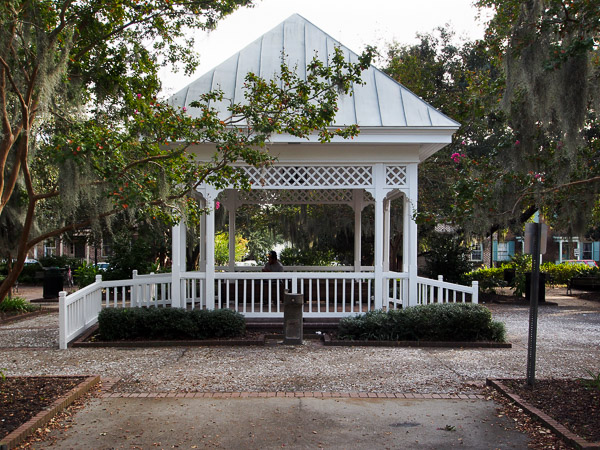
White Gazebo in Crawford Square
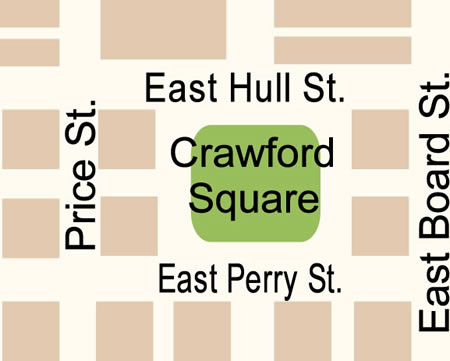
Points of Interest
- White Gazebo - center of Crawford Square
- Old County Jail and Police Department built in 1887 - (Near Crawford Square)
Crawford Square was laid out in 1841 and named in honor of Secretary of the Treasury William Harris Crawford. It is located on Houston, between Hull and Perry Streets on the eastern edge of the historic district. During the era of Jim Crow this was the only square in which African-Americans were permitted. In the early years all of the Savannah squares were fenced in but Crawford Square is the only one that remains fenced. Part of the original fence remains on the square. The square contains playground facilities, a basketball court, and a gazebo and is one of the smallest squares.
Crawford Square and its ward are home to several important buildings and sites, including the county jail and police department, as well as the police barracks. The jail and police department was housed in an 1887 building located at 235 Habersham Street The building is Italianate in style with a mosque-like dome reminiscent of north African and Egyptian architecture. The police barracks, which sits on the border of the Colonial Cemetery, date to approximately 1870 and is also an Italianate style. These buildings are now owned by SCAD (Savannah College of Art and Design).
